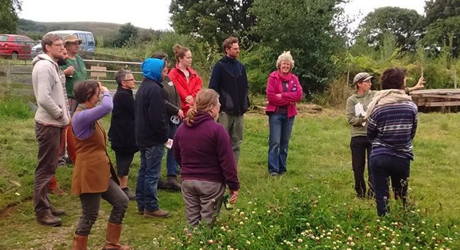Seed for BROCCOLI , CALABRESE, & RAPINI
More options than from the supermarket! Broccoli is a general term for the flower heads of everything in the cabbage family. Its is surprisingly easy to grow, you can eat the main head, any sideshoots that form, and the leaves. These are all great varieties that should give you a good crop with no fuss.
~ NORMAL BROCCOLI or CALABRESE~
We are offering two strains that grow at different rates. When it head up depends on plant size, temperature and day length.

Green Heading Calabrese
This is what we would consider 'normal' broccoli, taking about 120 days from planting out to make large green heads. We recommend this for your maincrop sowing.- It is for successional sowing from the end of March to July.
- The heads will then be ready for harvest from the end of July onwards.
Normal 120-day heading calabrese.
 300 seed, organic
£
300 seed, organic
£
Small screen: Turn your device sideways to view sowing calendar.

















































 = normal sowing & harvest time
= normal sowing & harvest time![]()
 = also possible depending on conditions
= also possible depending on conditions
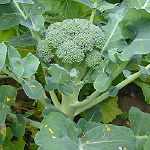 Quick Heading Calabrese
Quick Heading Calabrese
This slightly unusual variety makes heads about 60-80 days after planting out. The plants will be a lot younger, so the heads will of course be smaller - but it can be very useful for getting in an extra crop.
Two possibilities for sowing:
- Start it from mid-March either in situ, or in blocks for transplanting out - and get an extra-early crop of heads in May/June.
- Or, as long as the winter is not too severe, sow in late August or September in an unheated greenhouse or polytunnel, to get a very early crop at the start of the following year.
Of course, in reality, experienced gardeners will know that with all the brassica family, it can - to be honest - be a bit random when they do actually head up, as it depends so much upon temperature and daylength when they are small. But by sowing this one as well as the 'normal' type, you will extend your season, whenever that turns out to be!
'Quick' 60 day heading broccoli.
at least 200 seed £
Small screen: Turn your device sideways to view sowing calendar.









































































 = normal sowing & harvest time
= normal sowing & harvest time![]()
 = also possible depending on conditions
= also possible depending on conditions
~ Seed for SPROUTING BROCCOLI ~
 Early Purple Sprouting Broccoli
Early Purple Sprouting Broccoli
Should really need no introduction, but this makes a profusion of small purple flower sprouts in spring when fresh veg are most valued. Early purple sprouting is sown in late spring one year, and then starts to produce from around the start of March the following year.
The leaves are good to eat too, much as you would cook with cauliflower leaves.
![]() 250 seed £
250 seed £
Small screen: Turn your device sideways to view sowing calendar.









































































 = normal sowing & harvest time
= normal sowing & harvest time![]()
 = also possible depending on conditions
= also possible depending on conditions
 Asparagus Kale
Asparagus Kale
We are pleased to introduce this hardy grey-green kale that has been selected for its profusion of tender, sweet & tasty shoots in spring, like a green version of sprouting broccoli. You can also pick the leaves like any normal kale.
Keep picking them so it doesn’t stop production.
![]() Order KaAS - 250 seed £
Order KaAS - 250 seed £
Small screen: Turn your device sideways to view sowing calendar.












































































 = normal sowing & harvest time
= normal sowing & harvest time![]()
 = also possible depending on conditions
= also possible depending on conditions
~ Other BROCCOLIs ~
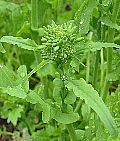 Cima Di Rapa 'San Marzano' (60 days)
Cima Di Rapa 'San Marzano' (60 days)
Unknown in the UK but easy to grow and loved on the continent. We introduced this in 2003 and it was a huge success. Everyone seemed to like it! Also known as Raab, it's related to turnip - but produces delicious sprouts like a slightly spicy flavoured sprouting broccoli.
Quick growing plants that reach about 1 ft tall, making small green sprouts used just like sprouting broccoli – but much quicker and easier to grow. Sow early spring under cover, or mid to late summer for harvest in 50-60 days.
Quick 'broccoli' from the Turnip family. Nice raw in salads or cooked.
 at least 300 seed
, organic £
at least 300 seed
, organic £

















































 = normal sowing & harvest time
= normal sowing & harvest time![]()
 = also possible depending on conditions
= also possible depending on conditions
Huauzontle (Aztec Broccoli )
This amazing plant grows large bushes (4 ft tall) with delicious edible leaves. However the best bits are the hundreds of flower shoots which you gather just before they show their tiny yellow petals.
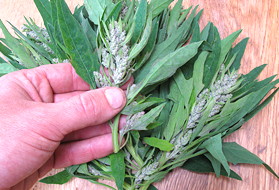
Just take the top 3 inches of each flower stem (which will have both leaves and flowers) and boil or steam them. They are simple to cook and really nice. As well as the flavour, what is special about this plant is the texture when cooked - it's one of the very few greens that keep a good texture when cooked, with a very slight crunch to them.
Because of this, as well as just eating as a green, they are a great thing to mix in with rice, potato cakes, couscous or stir-fries, as an easy way to make a very simple and plain dish seem really special.
If you're a particularly keen cook, search on the internet for 'Huauzontles' for lots of Mexican recipes for fritters and more! But they're great just cooked simply and quickly as a side dish too. We plant around half a dozen plants in our garden, giving us shoots from mid-summer right through to the middle of October.
Small screen: Turn your device sideways to view sowing calendar.























































 = normal sowing & harvest time
= normal sowing & harvest time
 = also possible depending on conditions
= also possible depending on conditions
Botanically speaking, this is Chenopodium berlandieri. The baby plants look similar to the weed Fat Hen - so don't weed them out by mistake! They can get about 3 to 5 ft tall, and almost as wide. The leaves go red as nights cool, looking very pretty.
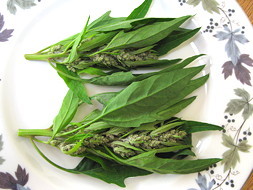
 approx 200 seed, organic
£
approx 200 seed, organic
£
Saving Your Own Vegetable Brassica Seed:
We would really like to encourage you to have a go at saving seed from brassica family - that's the cabbages, kales, oriental vegetables, broccoli and turnip family. We know many of you save obvious ones like tomato and lettuce seed, but we've noticed that in the past people shied away from doing the biennial vegetables (plants that flower in their second year).
More people are saving brassica seed now - and we'd like to encourage you to try it too: its incredibly easy, and you get so much seed, you'll have loads to give away. There's really no need for example to buy Kale seed from us every year at all. You just set aside a patch of good kale plants, and let them flower, making sure that you've got a reasonable number, that they are healthy, and that no other sorts are flowering nearby that might cross with them. You'll get lots of seeds in August.
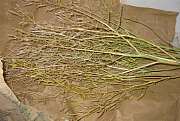
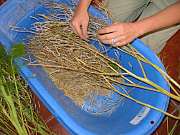
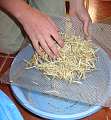

Here's Kate processing some Pak Choi.
You do need to make sure they aren't crossed with anything, as many of the brassicas (cabbages, cauliflowers etc) will cross with each other very readily.
Flower stalks from a good-sized population are hung
up to dry, then broken open over a bowl (or old baby bath in this case!).
The bits of pod are screened out with a sieve or a soil riddle - but you can instead winnow them off in a breeze pretty easily if you prefer.
Step-by-step instructions are here on our brassica-seed-processing page.
And of course, seed-saving is only possible because these are all real, non-hybrid varieties.
It's pretty foolproof - why not give it a go?






